Sciurid phylogeny using RAG1 and c-myc.
Scott Steppan, Brian L. Storz, and Robert S. Hoffmann
Sciurid phylogeny using RAG1 and c-myc.Scott Steppan, Brian L. Storz, and Robert S. Hoffmann |
Squirrels include some of the most familiar and most closely studied species among mammals. Their 273 species occupy a wide diversity of habitats. Besides the familiar tree squirrels, they include the burrowing prairie dogs, whose communal behavior has been of profound interest to behavioral ecologists, marmots and woodchucks, the flying squirrels (which have evolved remarkable skin membranes and other features for controlled gliding), as well as a variety of lesser known species around the world, both generalized and specialized. Many questions about the biology and evolutionary history of squirrels (the family Sciuridae) remain unanswered. Prominent among these are the evolutionary origins of the complex social systems of prairie dogs and their relatives, and whether the ability to glide evolved once among "flying" squirrels, or if it is a remarkable example of the same features evolving independently in two or more separate groups of species.
We have sequence representatives of all recognized tribes using two genes, Recombinase activating gene 1 (RAG1; 2,200 nucleotides) and the proto-oncogene c-myc (2,200 nucleotides). Results are summarized below.
Reprint pdf available (Steppan, S. J., Storz, B. L., and Hoffmann, R. S. 2004. Nuclear DNA phylogeny of the squirrels (Mammalia: Rodentia) and the evolution of arboreality from c-myc and RAG1. Molecular Phylogenetics and Evolution. 30:703-719).
 |
||||||||||||||||
| There are four major clades among squirrels, Ratufini, Sciurillus, Neotropical tree squirrels-plus-flying squirrels, and remaining groups. Each group is discussed in tern below. | ||||||||||||||||
Ratufini |
||||||||||||||||
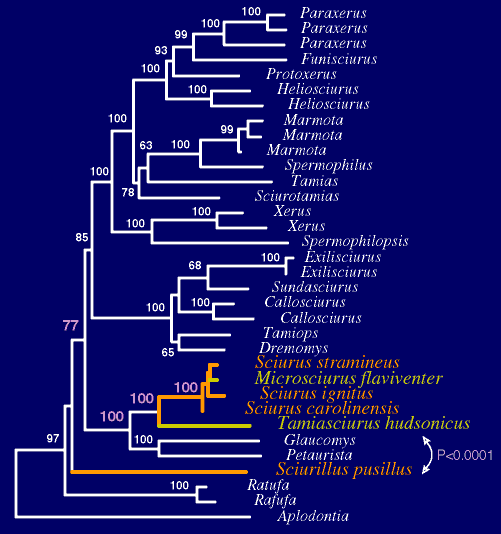 |
||||||||||||||||
| Sciurini is a paraphyletic group that includes Microsciurus and Tamiasciurus (placed at times in their own tribes) but does not include the pygmy squirrel Sciurillus. Tree including Sciurillus in Sciurini can be rejected by these data. | ||||||||||||||||
Sciurini |
||||||||||||||||
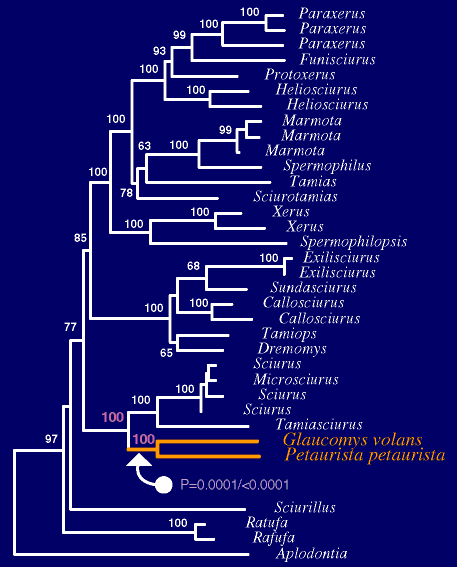 |
||||||||||||||||
| The "flying squirrels" appear monophyletic and closely related to Sciurini, but they are not basal to all other squirrels, as implied by their subfamily status as Petauristinae (all other squirrels are in Sciurinae). A rooting that is consistent with the current taxonomy (arrow) is strongly rejected by the data. | ||||||||||||||||
Petauristinae |
||||||||||||||||
 |
||||||||||||||||
Callosciurini |
||||||||||||||||
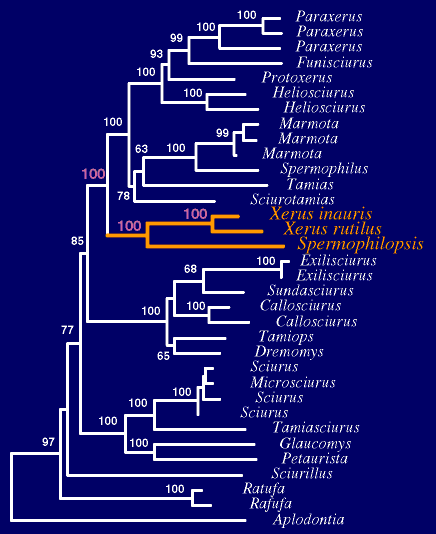 |
||||||||||||||||
Xerini |
||||||||||||||||
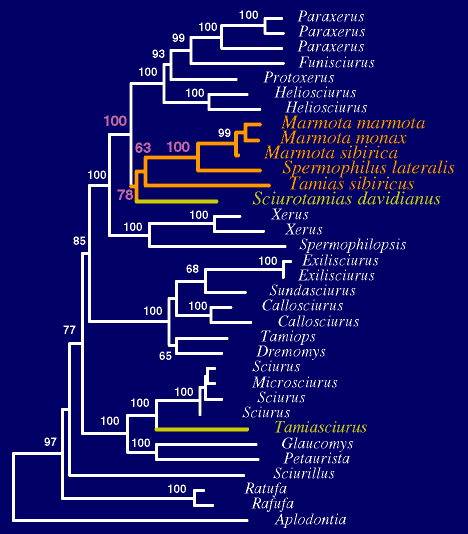 |
||||||||||||||||
| Holarctic ground squirrels, Marmotini, which includes marmots, ground squirrels, prairie-dogs, and chipmunks, includes the Chinese rock-squirrel Sciurotamias. It is the sister-group to an African clade. | ||||||||||||||||
Marmotini |
||||||||||||||||
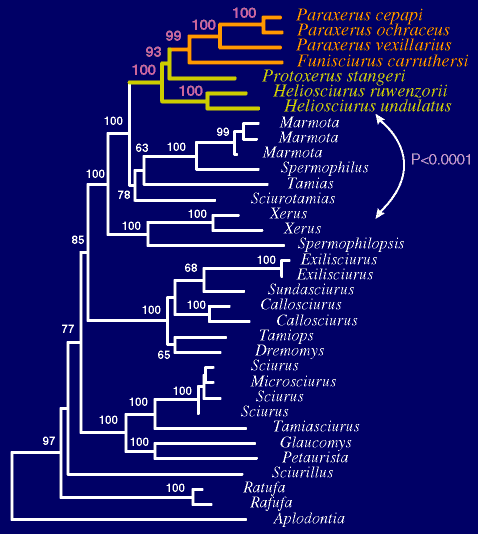 |
This African clade includes both protoxerines (green) and funambulines (orange), although the Indian Funambulus was not sequenced. The hypothesis that African protoxerines evolved from Xerini is rejected by the data. | |||||||||||||||
Protoxerini and Funambulini |
||||||||||||||||